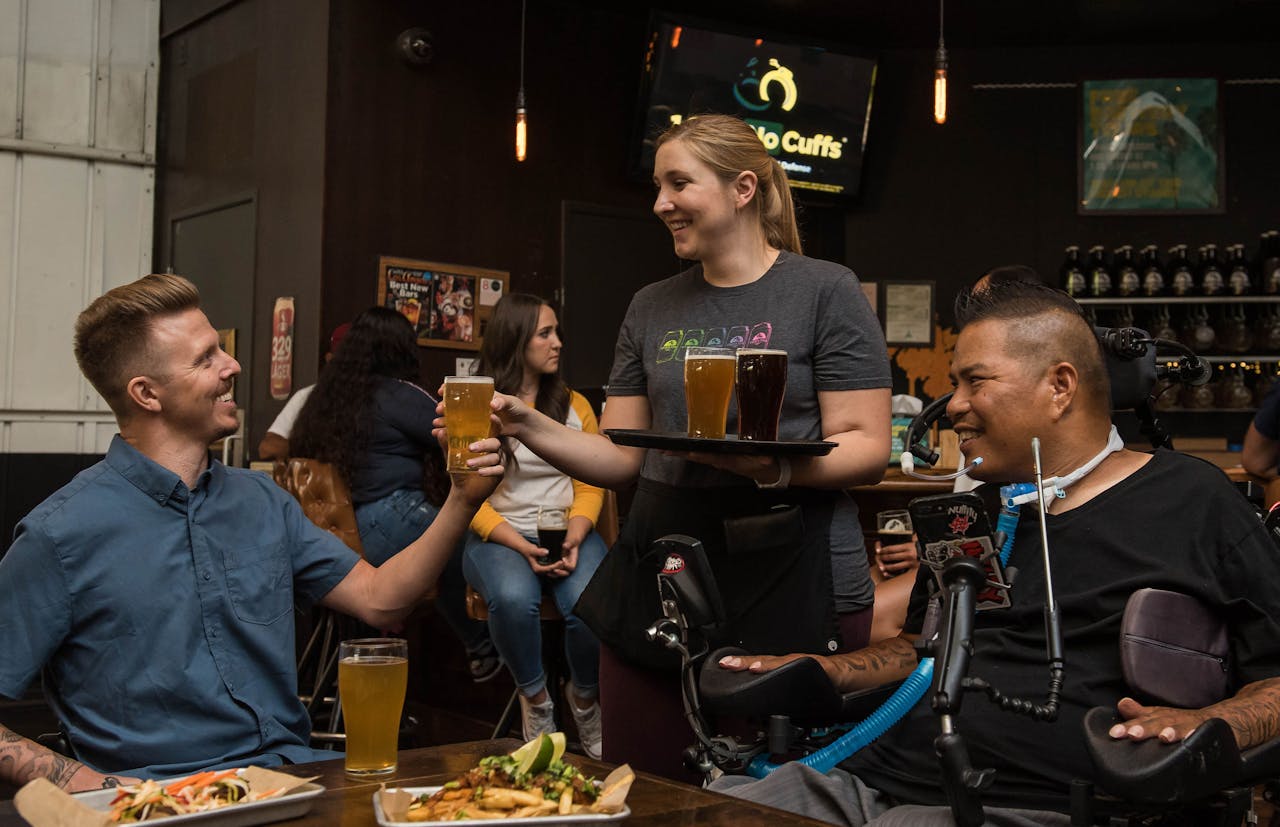Designing a fully accessible restaurant is a fundamental responsibility of business owners and architects alike. Accessibility should not be seen as an afterthought, but as an integral part of the design process. When wheelchair-accessible features are incorporated from the outset, it creates an inclusive environment that caters to the needs of all customers, including those with disabilities.
In this article, we will explore key considerations for designing a wheelchair-accessible restaurant and the specific ADA (Americans with Disabilities Act) standards that need to be met.
In the same genre : How can uplighting enhance the ambiance of a bar without increasing energy costs?
Understanding the Importance of Accessibility
Before diving into the technicalities of designing a wheelchair-accessible restaurant, it’s essential to understand why accessibility is so important. A restaurant is a public facility intended for use by all members of society, including individuals with disabilities.
A wheelchair-accessible design not only ensures that people with disabilities can access the restaurant with ease, but it also makes the space more comfortable and functional for everyone. This approach to design is known as universal design and aims at making spaces usable and effective for everyone, regardless of their physical capabilities.
Have you seen this : What is the best method to train restaurant staff on allergen awareness?
The ADA sets robust accessibility standards for public spaces, including restaurants, enforcing equal access rights for all individuals. Failure to meet these standards can result in legal consequences, not to mention damage to a restaurant’s reputation.
Navigating ADA Standards for Restaurant Design
The ADA has specific standards for restaurant design to ensure that people with disabilities, particularly those in wheelchairs, can easily access and navigate the space. These include standards related to the restaurant’s layout, floor space, door width, and restroom facilities.
According to ADA standards, the restaurant’s entry and exit doors must be at least 32 inches wide, which allows enough space for a standard wheelchair to pass through comfortably. In addition, there must be a clear path of travel throughout the restaurant, without any obstacles that could hinder wheelchair movement.
The restaurant’s tables must also be accessible, with a clear floor space of at least 30 inches by 48 inches to accommodate a wheelchair. The tables should be between 28 inches and 34 inches high to ensure that wheelchair users can comfortably use them.
In terms of restroom facilities, the ADA requires that at least one restroom (or a unisex restroom) be fully accessible. This means the restroom must have enough space for a wheelchair to turn (a minimum of 60 inches in diameter), grab bars next to the toilet, and a sink that’s no higher than 34 inches from the floor.
Design Considerations for Wheelchair Accessibility
Beyond just meeting ADA regulations, there are other design aspects to consider that can make a restaurant more accessible and welcoming for wheelchair users.
The restaurant’s design should include wheelchair-accessible seating areas that are integrated into the general seating plan, rather than isolated in a corner. This promotes a more inclusive atmosphere and avoids making wheelchair users feel separated from other diners.
The type of furniture used in the restaurant can also impact accessibility. Chairs and tables should be sturdy and stable, with sufficient space under the tables for a wheelchair. If the restaurant uses booths, it’s important to ensure that some tables are also available as booths can often be inaccessible for wheelchair users.
Lighting and signage are vital as well. Well-lit spaces and clear, easy-to-read signs can greatly enhance the dining experience for people with visual impairments or cognitive disabilities.
Incorporating Accessible Facilities and Services
Facilities and services are another crucial aspect of a wheelchair-accessible restaurant. It’s not just about the physical design of the space, but also the services offered and how staff interact with customers.
For example, consider offering menus in large print or in braille for visually impaired customers. Likewise, training staff to be aware of accessibility issues and teaching them how to interact sensitively with customers with disabilities can go a long way in creating an inclusive environment.
Additionally, considering accessibility in the restaurant’s outdoor spaces is equally important. If your restaurant has an outdoor dining area, ensure it is also wheelchair accessible. Remember to consider other elements like parking spaces, which should be wide enough for a wheelchair user to get in and out of a vehicle comfortably.
In conclusion, designing a wheelchair-accessible restaurant involves various factors, from understanding and applying ADA standards to considering the overall design and layout of the restaurant and the facilities and services it offers. With careful planning and a commitment to inclusivity, it is entirely feasible to create a restaurant that is welcoming and accessible to everyone.
ADA Compliance in Restaurant Design: Transient Lodging and Dining Areas
Complying with ADA standards is key when designing a wheelchair-accessible restaurant. One crucial area to consider is transient lodging. These are areas in a restaurant where customers may temporarily dwell, such as dining areas, lounges, and waiting rooms. Designing these spaces with compliance in mind ensures an unobstructed path of travel for individuals with disabilities.
For instance, a clear floor path with a minimum width of 36 inches should be maintained throughout dining areas and transient lodging areas, allowing wheelchair users to navigate seamlessly. This clear floor space should not overlap with the wheelchair passage, ensuring an unobstructed path of travel.
In terms of seating, the ADA stipulates that at least 5% of the total number of seats should be wheelchair spaces. Furthermore, it’s vital to provide companion seats next to these wheelchair spaces to foster a more inclusive environment.
Moreover, the ADA outlines specific requirements for tables within these areas. For instance, knee spaces under tables must be at least 27 inches high to accommodate wheelchair users. Additionally, the table’s surface should be between 28 and 34 inches above the floor, ensuring that it’s within the reach range of individuals using wheelchairs.
In terms of transient lodging, it is critical to provide wheelchair-accessible rooms within the establishment. These rooms must have a clear floor space, accessible routes, and bathrooms that are also ADA compliant.
State and Local Regulations for Wheelchair-Accessible Restaurant Design
While the ADA provides federal standards for accessibility, state and local regulations may also apply. These can sometimes be even more stringent than the ADA requirements, so it’s essential to understand them before embarking on the design process.
State and local regulations often reflect the specific needs and concerns of the local population. They may cover aspects such as parking requirements, accessible routes to the restaurant, and specific requirements for residential facilities in the area. For example, some local regulations may require more wheelchair spaces or larger companion seats than the ADA.
It’s crucial to consult with a knowledgeable architect or an ADA consultant when designing a wheelchair-accessible restaurant. These professionals will be aware of the most recent ADA standards, as well as any state and local regulations that may apply. They can ensure that your restaurant not only meets legal requirements but also serves the needs of all customers effectively.
Conclusion
Creating a wheelchair-accessible restaurant is not only a legal requirement under Title III of the ADA but also a socially responsible approach to business. Ensuring ADA compliance, considering state and local regulations, and applying thoughtful design considerations will lead to a dining space that is welcoming for all.
The goal is to integrate accessibility seamlessly into the restaurant’s design and operations. This includes providing clear paths of travel, accessible seating and tables, and ADA compliant facilities and services. This way, we go beyond compliance and create truly inclusive spaces, where all individuals, regardless of their physical ability, can fully enjoy the social service of dining out.






